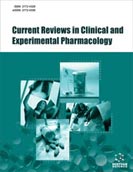Abstract
Background: Despite the developments of single or dual antiplatelet therapy consisting of aspirin and/or clopidogrel, prasugrel or ticagrelor, post-acute coronary syndrome a room for potential improvement towards optimal prevention persist. The addition of a direct oral anticoagulant to the antiplatelet treatment of patients with the acute coronary syndrome is clinically practiced in cases where anticoagulation is indicated by high thromboembolic risk.
Objective: The main objective of this review was to explore the role of supplementation with a direct oral anticoagulant to antiplatelet (aspirin or P2Y12 inhibitor) in patients with the acute coronary syndrome.
Methods: We have searched the Medline for studies involving direct oral anticoagulant use in acute coronary syndrome. We have reviewed specific relevant 9 meta-analyses between the years 2012 to 2019.
Results: Our review of nine meta-analyses has revealed that the addition of direct oral anticoagulant to antiplatelet therapy compared with antiplatelet alone was beneficial about the composite endpoints of major ischemic events in patients with the acute coronary syndrome. Furthermore, the combined regimen of single antiplatelet plus direct oral anticoagulant is as effective as the triple regimen of dual antiplatelet plus direct oral anticoagulant and results in less bleeding.
Conclusion: Cardiologists should balance the efficacy with a higher risk of bleeding with more intensified DOAC therapy. Better risk characterization and timely adaptation of the regime to the patient's need should be tested. Recurrent ischemic events and bleeding event risk scoring should guide individualized treatment.
Keywords: Acute coronary syndrome ACS, dual antiplatelet therapy DAPT, direct oral anticoagulant DOAC, single antiplatelet therapy SAPT, therapeutic versatility, anticoagulants.
[http://dx.doi.org/10.1038/nrcardio.2014.156] [PMID: 25286881]
[http://dx.doi.org/10.1016/j.jacc.2014.03.021] [PMID: 24685669]
[http://dx.doi.org/10.1093/eurheartj/ehu298] [PMID: 25154388]
[http://dx.doi.org/10.1007/s11239-014-1094-1] [PMID: 24891133]
[http://dx.doi.org/10.1097/MCA.0000000000000660] [PMID: 30222595]
[http://dx.doi.org/10.1007/s40256-015-0154-z] [PMID: 26650924]
[http://dx.doi.org/10.1080/13814788.2017.1350645] [PMID: 28743214]
[PMID: 30502871]
[http://dx.doi.org/10.1007/s11739-015-1226-4] [PMID: 25862436]
[http://dx.doi.org/10.1007/s10557-017-6730-5] [PMID: 28643219]
[PMID: 25177676]
[http://dx.doi.org/10.1371/journal.pone.0090986] [PMID: 24614630]
[http://dx.doi.org/10.1016/j.amjcard.2017.10.035] [PMID: 29195825]
[http://dx.doi.org/10.1016/j.jacc.2014.09.016] [PMID: 25260718]
[http://dx.doi.org/10.1056/NEJM199309023291001] [PMID: 8204123]
[http://dx.doi.org/10.1111/jth.13140] [PMID: 26764429]
[http://dx.doi.org/10.1177/0003319719874255] [PMID: 31533437]
[http://dx.doi.org/10.1007/s40256-018-0299-7] [PMID: 30182350]
[http://dx.doi.org/10.1002/clc.23224] [PMID: 31290171]
[http://dx.doi.org/10.1001/jamacardio.2019.1880] [PMID: 31215979]
[http://dx.doi.org/10.1001/jamacardio.2017.5306] [PMID: 29417147]
[http://dx.doi.org/10.1093/eurheartj/eht049] [PMID: 23470494]
[http://dx.doi.org/10.1001/archinternmed.2012.4026] [PMID: 23007264]
[http://dx.doi.org/10.1093/eurheartj/ehi877] [PMID: 16621870]
[http://dx.doi.org/10.1093/eurheartj/ehm545] [PMID: 18055486]
[http://dx.doi.org/10.1016/j.jacc.2007.07.053] [PMID: 17980250]
[http://dx.doi.org/10.1016/j.amjcard.2007.11.065] [PMID: 18394438]
[http://dx.doi.org/10.1001/jama.299.5.532] [PMID: 18252883]
[http://dx.doi.org/10.1016/S0140-6736(03)14287-0] [PMID: 13678873]
[http://dx.doi.org/10.1093/eurheartj/ehr334] [PMID: 21878434]































